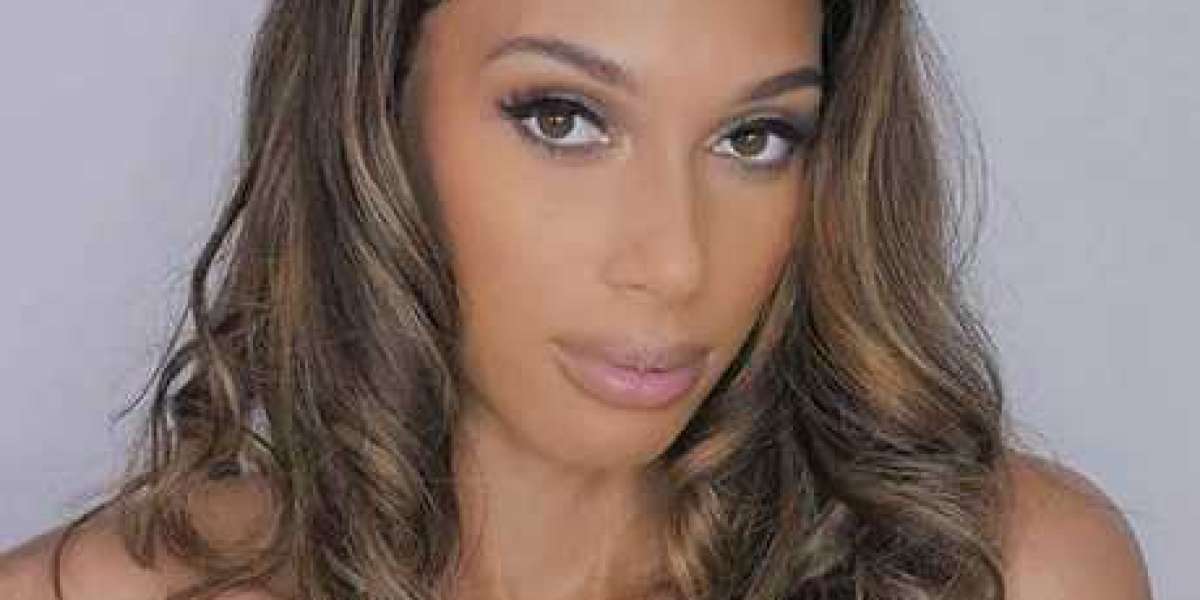Deep wave wigs do not look equally natural or flattering on all face shapes—their tight, voluminous curls add significant texture and fullness, which can either enhance facial proportions or emphasize unbalanced features depending on your face shape. The key lies in matching the wig’s volume, length, and styling to your face’s unique contours. Below is a detailed breakdown of how deep wave wigs perform on common face shapes, plus tips to optimize their natural look:
1. Round Face Shape: Choose Length to Elongate
Face traits: Wide cheekbones, equal width/length ratio, soft jawline.
Challenge with deep waves: Unstyled, full deep waves can add width to the cheeks, making the face appear rounder.
How to make it natural:
- Opt for mid-length to long deep waves (past the shoulders). Longer lengths draw the eye vertically, elongating the face.
- Avoid short deep waves (e.g., bob length)—they sit at cheek level and amplify fullness.
- Style with side-swept bangs or a side part: This creates asymmetry, breaking up the roundness and adding dimension.
2. Oval Face Shape: Most Versatile (Ideal Match)
Face traits: Balanced proportions, wider forehead than jawline, soft curves (no sharp angles).
Why it works: Oval faces are “universal” for most hairstyles, including deep waves. The wig’s volume complements the face’s natural balance without overwhelming it.
Natural styling tips:
- Any length works: Short (bob), mid-length, or long deep waves all look seamless.
- Try a center part for symmetry, or a side part for a casual vibe—both enhance the wig’s natural texture without clashing with facial contours.
3. Square Face Shape: Soften Sharp Angles
Face traits: Strong jawline, wide forehead/cheekbones, angular edges.
Challenge with deep waves: Tight, voluminous curls near the jawline can accentuate sharp angles (e.g., making the jaw look more defined).
How to make it natural:
- Choose long deep waves (below the collarbone). Length softens the jawline by falling over it, masking harsh edges.
- Add volume at the crown (not the sides): Tease the roots slightly to lift the hair upward—this shifts focus from the wide jaw to the top of the head.
- Avoid short deep waves or blunt cuts: They hug the jawline and highlight squareness.
4. Heart Face Shape: Balance a Narrow Chin
Face traits: Wide forehead/cheekbones, narrow or pointed chin (resembles a heart).
Challenge with deep waves: Too much volume at the top (e.g., crown area) can widen the forehead further, worsening the “top-heavy” look.
How to make it natural:
- Focus volume at the ends, not the roots: Opt for mid-length to long deep waves with looser volume near the crown. The curls should fall gently around the cheeks and chin, adding fullness to the narrow lower half.
- Use face-framing layers: Short, soft layers around the cheekbones/chin balance the forehead and fill out the chin area.
- Avoid high ponytails or top-heavy styling: These draw attention to the wide forehead.
5. Long (Rectangular) Face Shape: Add Width to Balance Length
Face traits: Longer than it is wide, narrow forehead/chin, subtle angles.
Challenge with deep waves: Straight or overly long deep waves can stretch the face further, making it look longer and narrower.
How to make it natural:
- Choose short to mid-length deep waves (chin to shoulder length). Shorter lengths add horizontal width, balancing the face’s length.
- Add volume at the sides: Style the waves to sit slightly outward at the cheek level (e.g., using a curling iron to enhance side volume). This creates fullness that “widens” the face.
- Avoid extra-long deep waves (past the chest): They elongate the face and emphasize narrowness.
Key Tips for a Natural Look (Regardless of Face Shape)
Beyond matching length/volume to your face, these details ensure the wig looks “real”:
1. Lace quality matters: Opt for HD transparent lace (for light skin) or Swiss lace (for medium/dark skin). These blend seamlessly with your scalp, hiding the wig’s edge.
2. Pre-plucked hairline + baby hairs: Wigs with pre-plucked hairlines (mimicking natural hair growth) and tiny “baby hairs” along the forehead look far more authentic than blunt, unplucked edges.
3. Customize the part: Use a fine-tooth comb to adjust the part (center/side) to fit your natural hair growth pattern (if you have any remaining hair). This avoids a “blocky” or unnatural part line.
4. Avoid excessive product: Too much hairspray or mousse can make deep waves look stiff and “wig-like.” Use a lightweight leave-in conditioner to keep curls soft and bouncy.
Final Verdict
Deep wave wigs can look natural on most face shapes—if styled to complement your contours. Oval faces have the most flexibility, while round, square, heart, and long faces need small adjustments (length, volume placement, part) to balance proportions. By choosing the right length and tweaking the style, you can achieve a seamless, “your hair but better” look.



